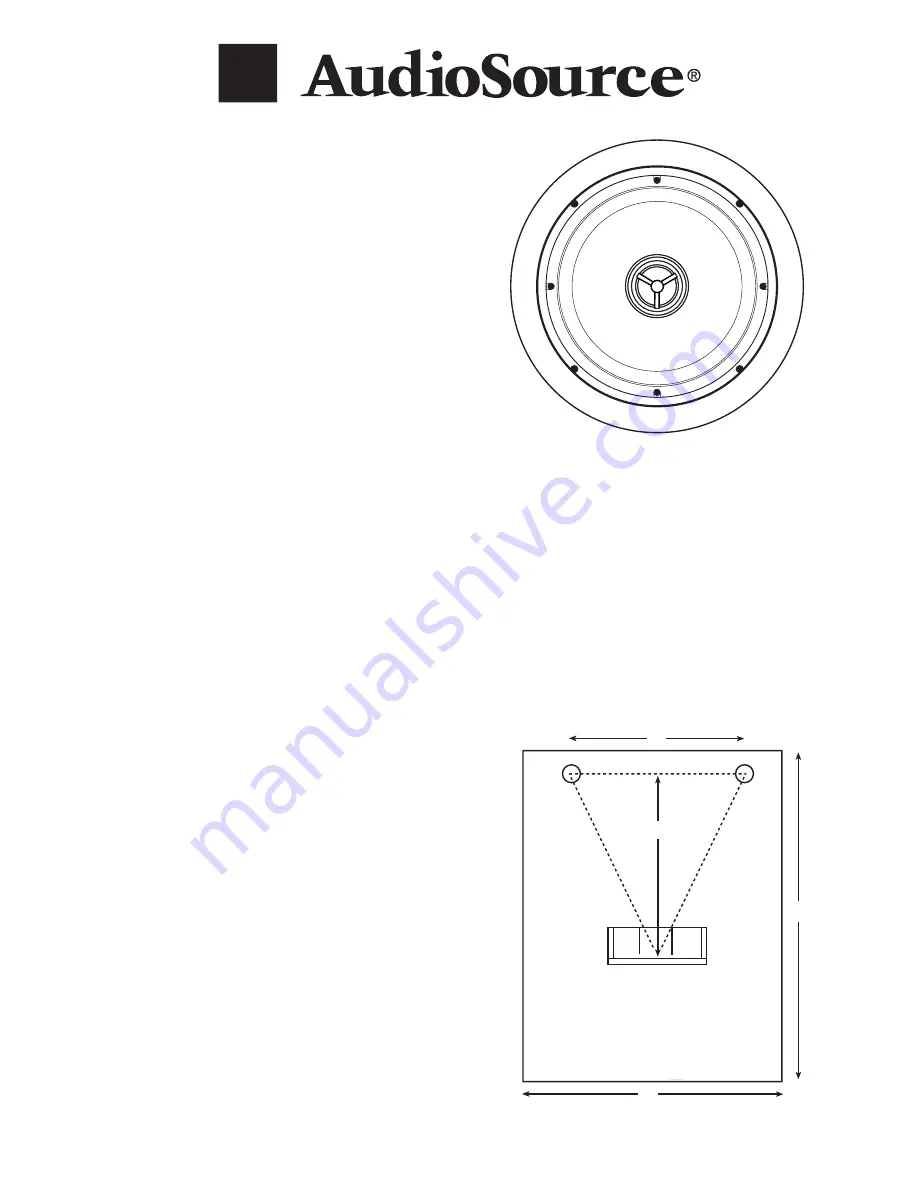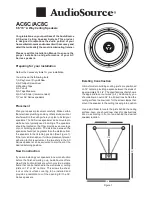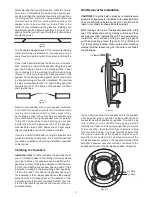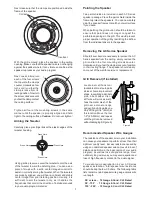
Congratulations on your purchase of the AudioSource
AC Series Ceiling Speaker System. This product
is designed to reproduce the audio portion of your
home entertainment environment with accuracy and
detail that will satisfy the most discriminating listener.
Please read this Installation Manual to ensure the
proper installation and performance of your AC
Series speakers.
Preparing for your Installation
Gather the necessary tools for your installation.
You will need the following tools:
1) A Keyhole or Drywall Saw
2) A Phillips Screwdriver
3) Masking Tape
4) A Pencil
5) A Tape Measure
6) A Stud Finder (recommended)
7) Your AC Series speakers
Placement
Plan your speaker placement carefully. Make certain
that electrical, plumbing and any other services will not
interfere within the ceiling where you plan to install your
speakers. The AC Series speakers can be mounted in
walls, but are typically used in ceilings. The speakers
should be located so that they provide even coverage
at your listening position. The distance between the
speakers should not be greater than the distance from
the speakers to the listening position (See Figure 1).
If the room’s dimensions or furniture placement prevent
adhering to this requirement, the tweeters in the AC
Series speakers can be swiveled to aim them at the
desired listening position.
New Construction
If you are installing your speakers in new construction
before the finished walls go up, AudioSource offers
New Construction Brackets, which provide a stable
frame that can be fastened to the wall studs or ceiling
joists on 16” or 24” centers. This allows the sheet
rock or other surface covering to be installed and
provides a template to cut the opening for the AC
Series speakers.
AC6C/AC8C
Use a stud finder to locate the joists behind the ceiling
surface. Also, you should now check for obstructions
like cross bracing in front of and behind the desired
speaker location.
6.5”/8” 2- Way Ceiling Speakers
11’
16’
20’
11.5’
Figure 1
Existing Construction
In most modern buildings ceiling joists are positioned
on 16” centers, providing a space between the studs of
approximately 14
3/8
”. The specifications chart shows
the appropriate cut out sizes (p. 4). Additionally, you
should allow an extra
3/4
” in all directions behind the
ceiling surface to allow room for the screw clamps that
mount the speaker to the ceiling to swing into position.






















